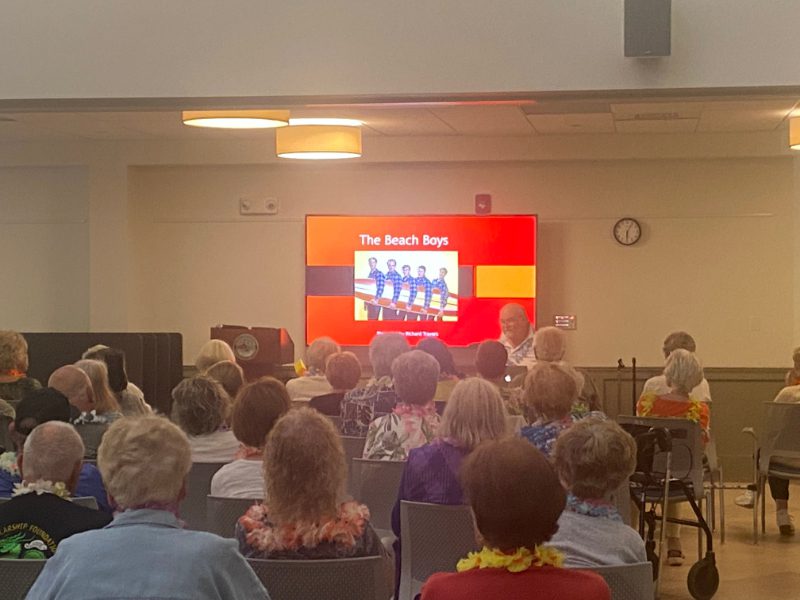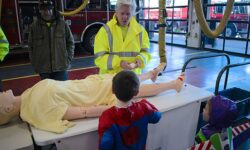By Riley Fontana
Hometown Weekly Reporter
The Beach Boys remain one of the most influential forces in music, particularly during their peak in the 1960s. Their immense popularity made their shows highly sought after, and their legacy continues to resonate within the music industry.
This enduring appeal and the fond memories they evoke are why the Walpole Council on Aging invited Richard Travers, a music teacher and conductor, to deliver one of his renowned presentations on The Beach Boys and their surf rock sound. The presentation opened to a full room of attendees dressed in leis and Hawaiian shirts, eager to relive the golden days of beach music. Italian ice from Rita’s was served to enhance the beachy atmosphere and treat everyone to a sweet taste of summer.
Many in the audience had seen The Beach Boys live and were excited to delve into the behind-the-scenes stories. Brian Wilson, the creative genius behind the five-member band, was known for his extraordinary ability to hear and manipulate music. He transformed the recording studio into a vast instrument, which helped The Beach Boys produce seven of the biggest hits of the 1960s.
The Beach Boys started as a garage band before their breakout hit “Surfin’ USA,” which cleverly incorporated a sample from Chuck Berry’s “Sweet Little Sixteen.” Following “Surfin’ USA,” they released more surf rock anthems like “Good Vibrations” and “Wouldn’t It Be Nice” before shifting toward songs that reflected middle-class aspirations during the Vietnam War. Their music came to symbolize the challenges America was facing, and before Brian Wilson retired due to health issues, The Beach Boys were honored with a Lifetime Achievement Grammy.
Today, the legacy of The Beach Boys lives on through original member Mike Love and Bruce Johnston, who joined in 1965. Though the band still tours, many original members have been replaced by new performers, a testament to the undying influence of surf rock.






















